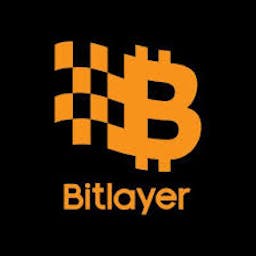Wigwam is the best  Bitlayer blockchain crypto wallet
Bitlayer blockchain crypto wallet

Why choose the Wigwam crypto app?
Work with Bitlayer Testnets and Mainet
Buy Bitlayer tokens, including native token, by using a credit card
Swap Bitlayer-based tokens directly in the wallet
Possibility to connect the wallet to all Bitlayer blockchain dAps: DeFi, DAO, Gamings, etc
How to get a Bitlayer address in Wigwam web wallet
Create a wallet in Wigwam
Choose a Bitlayer network from the dropdown menu
Copy you Bitlayer address
Bitlayer Blockchain Review
Bitlayer is a next-generation Layer 2 solution that builds on the Bitcoin network while integrating the Ethereum Virtual Machine (EVM). Its vision is to merge Bitcoin’s unmatched security with Ethereum’s programmability, creating a blockchain that is both highly secure and fully compatible with existing decentralized applications.
Core Architecture
At its foundation, Bitlayer is designed as a rollup solution that anchors to Bitcoin. It leverages a paradigm called BitVM, which allows for advanced programmability and verification of computations within the Bitcoin ecosystem. This ensures that while transactions and smart contracts execute on Bitlayer, their security is ultimately guaranteed by Bitcoin’s base layer.
Bitlayer introduces a dual-finality model:
- Soft finality is achieved through a fast Proof-of-Stake (PoS) consensus mechanism, allowing users to interact with the network efficiently.
- Hard finality is anchored to Bitcoin through rollup commitments, ensuring that even if Layer 2 validators fail or misbehave, the ultimate state of the chain remains secure.
EVM compatibility
One of Bitlayer’s strongest selling points is its full EVM compatibility. Developers can deploy smart contracts written in Solidity without modification, and the blockchain supports the Ethereum toolchain, including frameworks, libraries, and wallets like MetaMask. This drastically reduces the learning curve for developers and makes migration of existing Ethereum applications seamless.
The chain is designed to keep pace with Ethereum upgrades. It currently supports Solidity up to version 0.8.28 and incorporates most features of the EVM up to recent hard forks. This ensures broad compatibility and future resilience.
Developer and user experience
For developers, Bitlayer feels like Ethereum with the added assurance of Bitcoin-level security. DApps, DeFi protocols, and NFT platforms can be ported directly, while new projects can launch with confidence that their infrastructure is robust.
For users, interaction with Bitlayer is straightforward. Standard Ethereum wallets and tools work, meaning users can bridge assets, execute transactions, and interact with decentralized applications with the same ease they are used to on Ethereum. The big difference lies under the hood: security is anchored to Bitcoin, giving users greater trust in the integrity of the system.
Security Model
The security model of Bitlayer sets it apart. By anchoring to Bitcoin, it inherits the immutability and censorship resistance of the world’s most secure blockchain. Transactions that reach hard finality are protected by Bitcoin miners, making them as tamper-resistant as the Bitcoin network itself.
In addition, the rollup design ensures scalability without compromising trust. Fraud-proof and dispute resolution mechanisms are designed to detect misbehavior, allowing users to challenge invalid states. This creates a balance of efficiency and security that is rare in blockchain systems.
Use Cases
Bitlayer opens up a range of opportunities:
- Decentralized Finance (DeFi): Developers can build lending, trading, and yield platforms secured by Bitcoin.
- NFTs and Gaming: Ethereum’s NFT ecosystem can extend to Bitcoin users through Bitlayer’s EVM compatibility.
- Bridging Bitcoin Liquidity: For the first time, Bitcoin liquidity can flow easily into EVM-based applications without leaving the security umbrella of the Bitcoin network.
- Enterprise Applications: Businesses seeking both programmability and maximum security can leverage Bitlayer for supply chain, identity, or financial systems.
Strengths
- Inherits Bitcoin’s unmatched security
- Fully EVM-compatible with Solidity support
- Seamless migration for Ethereum developers
- Dual-finality model providing both speed and safety
- Bridges Bitcoin liquidity into DeFi and dApps
Challenges
- As a relatively new project, Bitlayer’s ecosystem is still developing, with fewer applications compared to Ethereum or other established Layer 2s.
- Dependence on the robustness of the BitVM paradigm, which is innovative but less battle-tested than Ethereum’s rollup frameworks.
- User adoption will depend on liquidity and the success of cross-chain bridges to bring Bitcoin assets into the system.
Conclusion
Bitlayer is an ambitious attempt to unite the strengths of Bitcoin and Ethereum. By combining Bitcoin’s rock-solid security with Ethereum’s developer-friendly environment, it positions itself as a powerful Layer 2 ecosystem. While still in its early stages, Bitlayer has the potential to redefine how Bitcoin is used—not just as a store of value, but as the backbone of a programmable financial and application layer.
Bitlayer blockchain FAQ
You can track your wallet activities through blockchain explorers built for Bitlayer. These explorers allow you to view transaction history, smart contract interactions, token balances, and any other activity associated with your wallet address.
Since Bitlayer is EVM-compatible, the most popular Ethereum-compatible wallets also work here. Wallets like Wigwam, MetaMask, Trust Wallet, and WalletConnect-enabled apps provide seamless integration. For advanced users, hardware wallets such as Ledger or Trezor add an extra layer of security.
- Open MetaMask and go to Settings > Networks > Add Network.
- Enter the network details provided by Bitlayer (RPC URL, Chain ID, and Block Explorer URL).
- Save and switch to the Bitlayer network.
After this setup, you can send, receive, and interact with Bitlayer tokens and dApps directly in MetaMask.
Bitlayer anchors its security directly to Bitcoin through the BitVM paradigm, making it more secure than most EVM-compatible blockchains. Unlike many Layer 1 chains, it combines Ethereum’s flexibility with Bitcoin’s trust model.
Yes. Through bridges and wrapped assets, Bitcoin liquidity can be brought into Bitlayer and used in DeFi, NFT, or gaming applications—without leaving the security model of the Bitcoin ecosystem.
Bitlayer uses a dual-finality model. Transactions achieve soft finality through a Proof-of-Stake mechanism for speed and hard finality when rolled up and secured on the Bitcoin main chain. This ensures both efficiency and maximum security.


